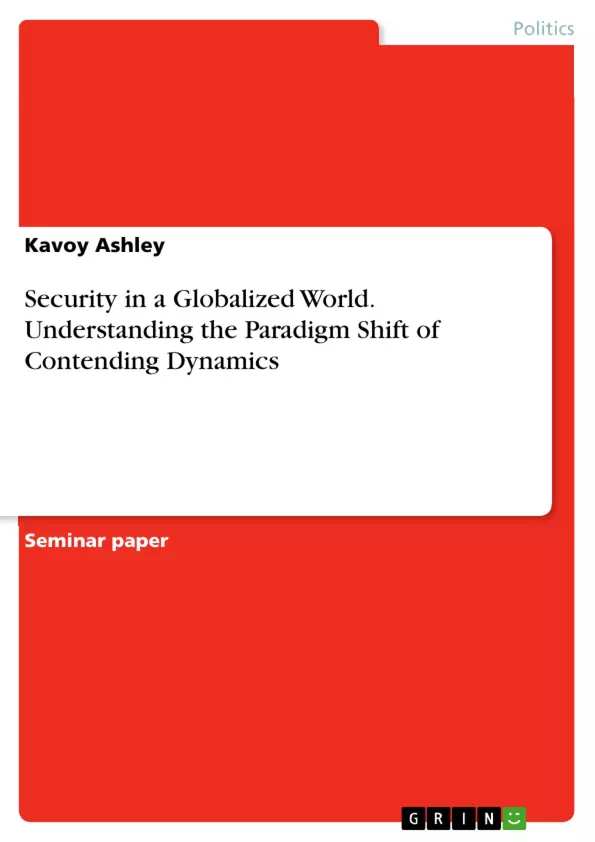To what extent has security moved from a more individualistic concern to one of commonality for sates within the international community? Has the idea of security transcended that of the seemingly anarchic conceptualization of 'security as military prowess'? Are there new threats to global security?
For years, the issue of national security has been one of humanity’s greatest concerns. So much so, that the prevailing modern day rhetoric seems to be focalized on that which German scholar John Hertz (1951) calls ‘the security dilemma’. The succession of time, however, has allowed for the redefinition of the concept of ‘security’ as applied to sovereign states within the International community.
This argumentation seeks to explore the evolution of the understanding of security over the course of time, as well as some of the new threats which make the concept a contemporary issue of International relations.
Table of Contents
- Introduction
- Chapter I: Probing the Dynamic Evolution of Security
- The Paradox of Tradition vs Evolution
- Traditional Security
- The Non-traditional conceptualization of security
- The notion of Global Security
- Chapter II: Contemporary Threats Posed to Global security
- International Armed Conflict
- Infectious Diseases
- Climate Change
- Chapter III: The work of the UN in circumventing threats to Security
- The Security Council
- Health and the Security Agenda
- Climate Change
- Conclusion
Objectives and Key Themes
The purpose of this text is to explore the evolution of security in the international system, focusing on the shift from traditional to non-traditional security approaches. It examines the contemporary threats to global security, including international armed conflict, infectious diseases, and climate change. The text also discusses the role of the United Nations in addressing these challenges.
- The evolution of the concept of security
- The traditional and non-traditional dimensions of security
- Contemporary threats to global security
- The work of the United Nations in addressing security threats
- The impact of globalization on security paradigms
Chapter Summaries
Chapter I: Probing the Dynamic Evolution of Security: This chapter explores the historical development of the security concept, highlighting the tension between traditional, realist views focused on military strength and the newer, non-traditional approaches that encompass broader issues like environmental and human security. It examines how the concept of security has evolved and become more complex in a globalized world.
Chapter II: Contemporary Threats Posed to Global Security: This chapter examines contemporary threats to global security, including international armed conflict, infectious diseases, and climate change. It discusses the transnational nature of these threats and their impact on international stability.
Chapter III: The Work of the UN in Circumventing Threats to Security: This chapter focuses on the role of the United Nations in addressing contemporary security threats. It explores the work of the Security Council, the UN's involvement in health security, and its efforts to address climate change.
Keywords
Key terms and concepts explored in this text include security, global security, traditional security, non-traditional security, international relations, international armed conflict, infectious diseases, climate change, United Nations, Security Council, globalization, paradigm shift, and contemporary threats.
- Citar trabajo
- Kavoy Ashley (Autor), 2014, Security in a Globalized World. Understanding the Paradigm Shift of Contending Dynamics, Múnich, GRIN Verlag, https://www.grin.com/document/286677



